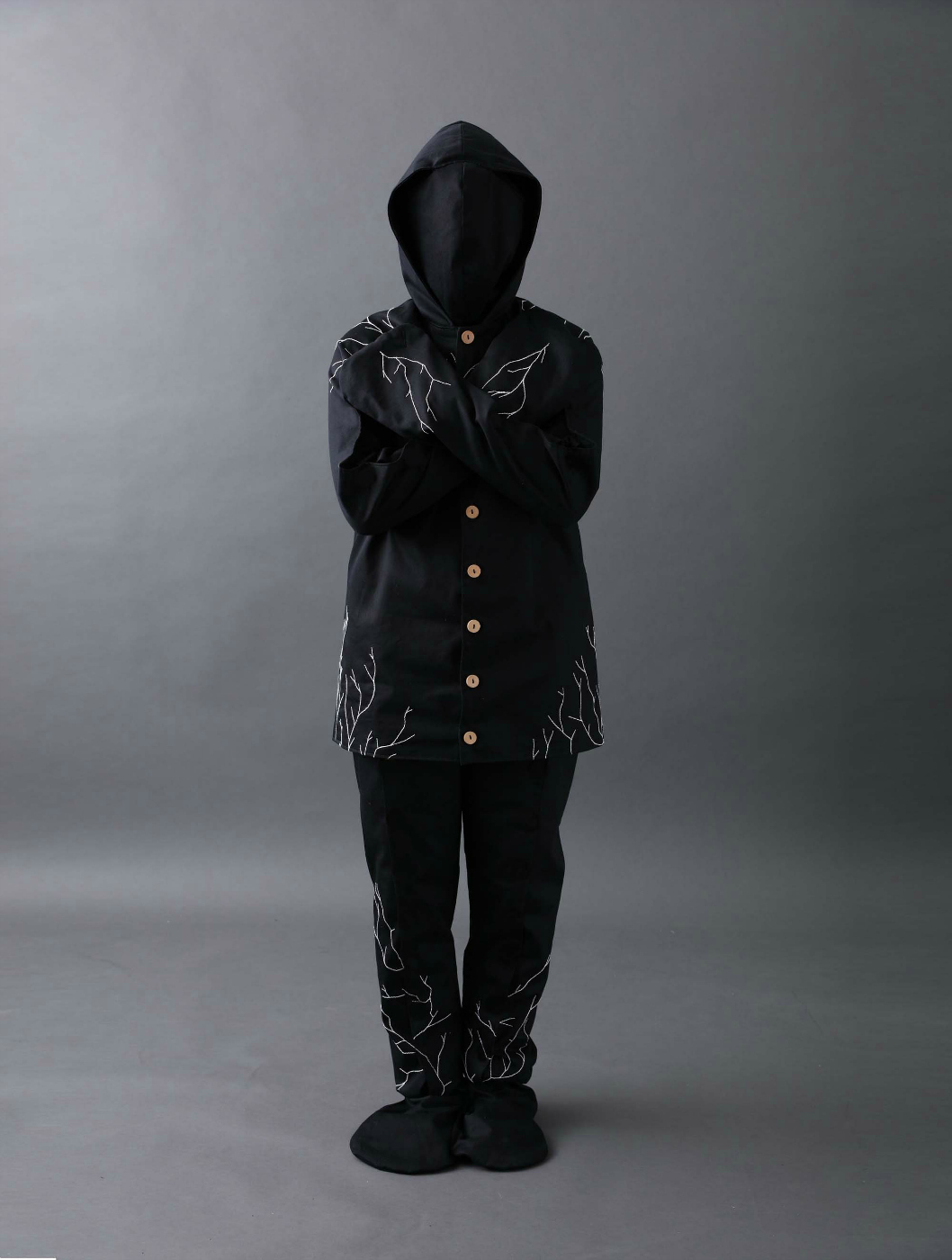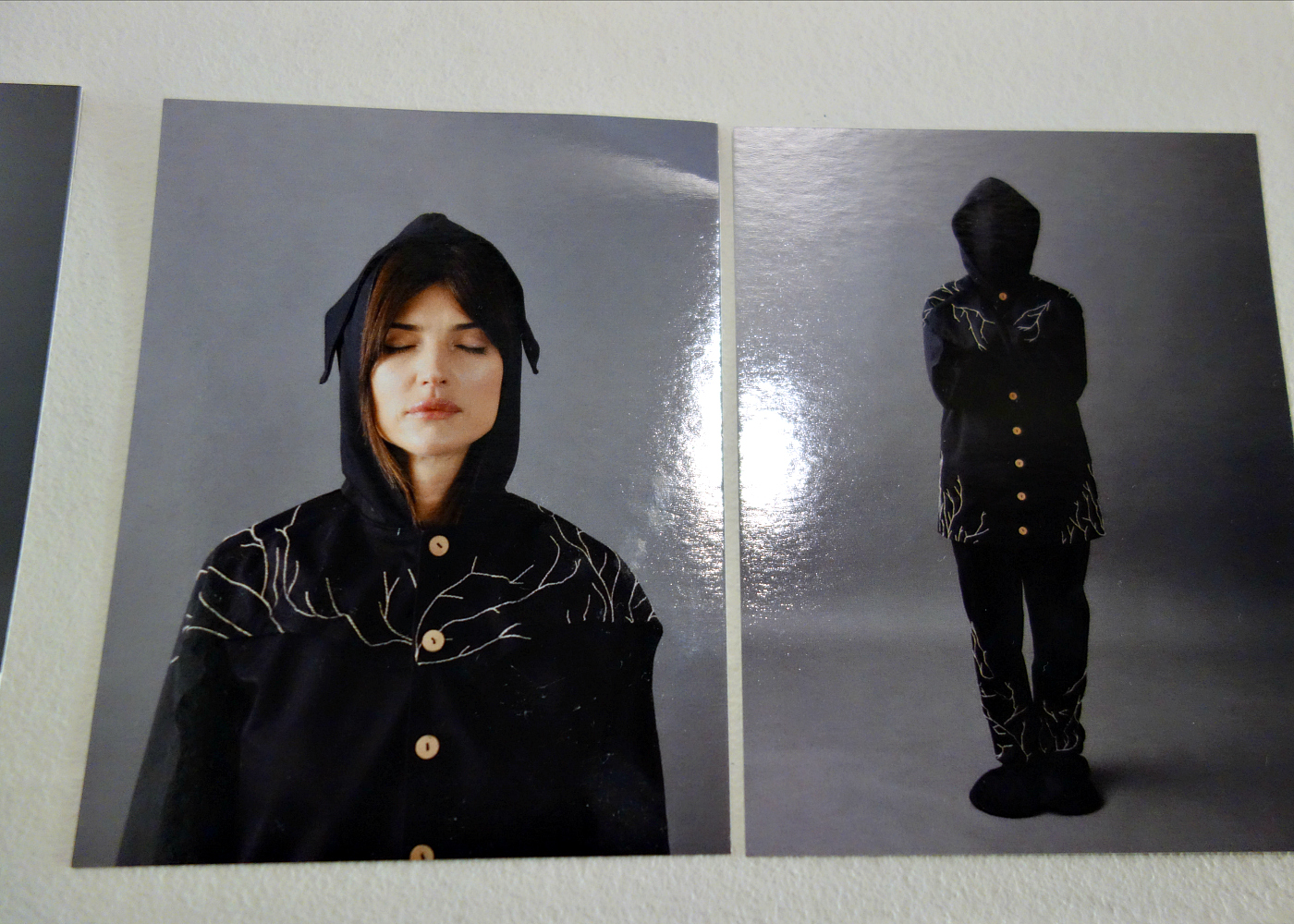A Burial Suit of Mushrooms that Consume Your Remains
A Burial Suit of Mushrooms that Consume Your Remains

The Infinity Burial Suit by Jae Rhim Lee (courtesy Coeio)
Despite embalming and sealed caskets being a relatively new tradition in American burial, brought about by the high mortality of the Civil War, we’ve quickly become uncomfortable with our mortal decay. The 19th-century “Fisk Mummy” coffin, proclaimed to be “air tight” for protecting against decomposition, may seem like an oddity of the past with its cast-iron pod, but many coffins are stilladvertised with their “sealing” properties. And large cemeteries continue to expand their massive group mausoleums where remains are suspended above the earth.
Yet aside from the visceral response to the breakdown of our skin, muscles, and, eventually, bones, there’s beauty in this process of becoming part of the planet from which our consciousness has departed. Artist Jae Rhim Lee envisions a pajamas-like burial outfit that would not only encourage this bodily deterioration, but would use mushrooms and other microorganisms to remediate any environmental toxins in the flesh, such as from pesticides or pollution. The MIT visual studies graduate got a lot of attention for the prototype with a 2011 TEDtalk, which included mushrooms feasting on her own hair and nails, and now you can purchase one of your own through the recently launched Coeio. They’re not cheap at $1,500, although a standard casket on average costs $2,000, according to the Federal Trade Commission.
You can check out the Infinity Burial Suit in the Natural Causes exhibition currently at the Ace Hotel New York. Displayed in conjunction with New York Fashion Week, the black suit reclining in a giant box is certainly an ominous fit for the hip hotel, and is perhaps more advertisement than art, yet it’s interesting to see such an institution addressing death design in its gallery space. The display itself is rather underwhelming, with just a few diagrams for the suit joining Lee’s video and the burial outfit itself.
The process by which mushrooms remove or eliminate toxins from the environment is called Mycoremediation. Mushrooms break down toxins in two ways. With organic toxins, mushrooms break down molecular bonds, thus neutralizing toxins or breaking the toxins down. In other cases, such as with heavy metals, the mushrooms bind the toxins through a process called chelation and in turn make the toxins innocuous. These various processes only provide positive benefits that save energy and resources, improve the soil, and enrich plant life.

Images of the Infinity Burial Suit at the Ace Hotel (photo by the author for Hyperallergic)
Lee is among a growing movement actively examining ways in which burial, our final personal gesture for our lives, can be greener. Embalming involves toxic chemicals such as formaldehyde, which can seep into groundwater; cremation can release these chemicals into the air, and also uses a high amount of energy. Architect Katrina Spade recently proposed the Urban Death Project, involving specially designed towers where human remains could naturally decompose and be transformed into rich soil. The Death Lab at Columbia University’s Graduate School of Architecture, Planning and Preservation imagined using biomass to power cemetery lights as an ephemeral tribute. And Pia Interlandi’s Garments for the Grave are designed to decompose along with the bodies.
A big hurdle for many of these is death infrastructure — the Infinity Burial Suit, and its accompanying pet shrouds, are easiest to use in green cemeteries — as well as confusion over current laws. Burial regulations vary by state, so that, for instance, you’re required to employ a funeral director in Alabama, while in Pennsylvania there are no such laws, making your options more complicated.
Nevertheless, projects like Lee’s suit seeded with mushroom mycelium are a reminder that there are other choices aside from the standard wooden coffin, embalming, and burial vault-lined plot that have been dominant in American cemeteries over the past decades.
Here’s Lee’s TEDtalk on the Infinity Burial Suit:

Comments
Post a Comment